“Don’t reinvent the wheel.” That’s what they say when trying to improve something that doesn’t need to be improved. Nevertheless, new bicycles appear, and there is a demand for them. The prototype of the Fatbike was seen in the 1930s – engineers wanted to refresh the design of an ordinary bicycle. There is quite a logical question: why does a bicycle need thick wheels? It’s simple – to plow through loose snow and conquer sand dunes. Today we will talk about one of the most unusual types of production bicycles – Fatbike—what-is-it-and-what-is-it-for–how-to-choose.
What is a Fatbike—what-is-it-and-what-is-it-for–how-to-choose
Translated from English Fatbike—what-is-it-and-what-is-it-for–how-to-choose means “fat bike”. In fact, it is not so thick, but the wheels immediately catch the eye with their outstanding size. The tires are 3.8 inches or thicker. Due to the low pressure in the tires, the Fatbike will go where the wheel of a regular bike will not. The wheels of this model weigh about 6 kg, which increases the total weight of the bike to 15-17 kg. It would seem that good is not enough and many people think, but what do you need Fatbike—what-is-it-and-what-is-it-for–how-to-choose for? As life shows, wanting to buy a fat-bike was quite a lot, and demand for models with thick wheels is not lost.
First of all Fatbike—what-is-it-and-what-is-it-for–how-to-chooses are notable for their high cross-country ability. Loose snow, high grass, deep sand, peat – in rare cases, the usual bike will run briskly on such a surface, which can not be said about the “thick. In operation, tire pressure ranges from 0.2 atm. to 2 atm. Tire width ranges from 3.5 to 4.8 inches, rim width ranges from 65 to 100 mm. The low pressure is the key factor that makes the Fatbike highly passable. So what’s the fun of the Fatbike—what-is-it-and-what-is-it-for–how-to-choose?
In fact, such models have existed for a long time, and their prototype first appeared back in the 1930s. But it is now that marketers are noticing an increased demand for bicycles with thick wheels. Fatbike is almost an ideal vehicle, designed for riding on rough terrain. In front of the owners of such models open up many opportunities and new routes. Perhaps the greatest advantage of the Fatbike is the ability to freely ride in freshly fallen snow.
History of origin
The word Fatbike—what-is-it-and-what-is-it-for–how-to-choose was first mentioned in a specialized American magazine “Strange but True” in 1932. The article reported that some trickster invented a bicycle with thick tires. At the time, many took the news with humor, not taking the information submitted seriously. However, in the 90s, Mark Grunwald, an inventor from Alaska, introduced a full-fledged bike Fatbike—what-is-it-and-what-is-it-for–how-to-choose with 3-inch tires, stretched on a standard rim. According to the inventor’s idea, the bike should be “on horseback” all year round, that is, to overcome loose snow, ride on grass, sand and other specific surfaces.
The first Fatbike—what-is-it-and-what-is-it-for–how-to-choose of serial production was the legendary Surly Pugsley, which revolutionized the bicycle world. Nowadays, quite a few models with thick tires are produced, which meet the requirements of even the most demanding cyclists.
The device and the main features
What is the meaning of the Fatbike—what-is-it-and-what-is-it-for–how-to-choose and what are its main distinguishing features? It is clear that the first and most important feature is the wheels. Thick and fleshy tires provide a high cross-country bike. But the tires are not the most important thing. Low pressure is what keeps the fat on loose surfaces and avoids punctures.
At the same time, thick tires are also the main disadvantage of the bike. Gravity is a merciless force and thick wheels inexorably pull to the ground with double the force. But this point can be beautifully circumvented if you drill a lot of holes in the rim, which is done by many owners of “fat” and even manufacturers.
Many people wonder what is better: a Fatbike—what-is-it-and-what-is-it-for–how-to-choose or a mountain bike? No one will give you a definite answer to this question. Here you need to consider the specifics of riding and individual preferences of each rider. However, once you understand the design features, you can make more or less intelligible conclusions and make a decision.
Yes, fats are much heavier, but their weight is compensated by some design features. Front fork put a shock absorber, but as such, there is no need for this, because the course is so soft even without it, that even an expensive two-suspension with a quality suspension will be the usual stool in comparison with the sofa-like Fat. For most riders, this is far more important than the all-terrain capability of a Fatbike. The difference is especially noticeable on gravel roads. Another thing that differentiates Fatbike—what-is-it-and-what-is-it-for–how-to-chooses: heavyweight bikes have a disc brake system.
Types of Fatbikes
At the moment, it is impossible to clearly classify Fatbike—what-is-it-and-what-is-it-for–how-to-chooses, as manufacturers are constantly improving their products, modernizing the design of bikes, adding new elements, etc. Nevertheless, we can distinguish several categories and groups. First of all, all Fatbike—what-is-it-and-what-is-it-for–how-to-chooses are divided into two large groups:
- Offset.
- Offset.
Now, as for the categories. The classification is made according to the design features:
- Single-speed. The simplest model of Fatbike—what-is-it-and-what-is-it-for–how-to-choose with a rigid fork and no speed variations.
- Classic. With a conventional or planetary hub, several speed modes, offset or non-offset construction.
- Electric. Not a bad option for the city, especially if it is a mini-fat with a reduced diameter of wheels. If the engine runs out of charge, it is possible to continue the movement by muscular power.
- Folding. A compact model that is practical and easy to use. It is easy to fold, which is very convenient for storage and transportation. It is the best option for charming cyclists.
- Dual Suspension. Dual suspension is a great option for off-road riding. It improves handling, which is especially noticeable on sticky pavement.
- Four-wheel drive. All-wheel drive opens up new opportunities, increasing already good cross-country mobility.
- Tricycles. Tricycles are most often found in electric versions, and are seen as cargo versions of conventional Fatbikes. They are equipped with a large luggage compartment at the back. There are also models with a front pair of wheels.
Of course, there are also customized Fatbike—what-is-it-and-what-is-it-for–how-to-choose models. Most often they are made to order, according to individual preferences. Basically, the Fatbike is an off-roader in the world of bicycles. But is it so good and why do such models have their opponents? Let’s take a closer look at the pros and cons of the Fatbike.
Pros and cons
The advantages of such models really have a lot. Among them, it is worth noting the most obvious:
- Versatility. On “Fatbike—what-is-it-and-what-is-it-for–how-to-chooses” you can freely ride both in summer and winter. The loose snow allows you to test and evaluate the capabilities of the bike.
- Original appearance. You will not be left without attention on the Fatbike—what-is-it-and-what-is-it-for–how-to-choose for sure. Stylish exterior attracts the eyes of others, so at the themed event your bike is sure to be in the spotlight.
- Excellent cross-country mobility. You can freely ride a Fatbike on overgrown meadows, peat bogs, quicksand and loose snow. The bike is free to ride on gravel roads, bringing pleasure to its owner.
- Easy to use. Most Fatbike—what-is-it-and-what-is-it-for–how-to-chooses are equipped with universal hubs, which can be swapped, which is very convenient on trips over long distances.
- Manageability. Maybe Fatbike—what-is-it-and-what-is-it-for–how-to-chooses are not as maneuverable as city or mountain models, but they are responsive and never lose traction, even in the most extreme situations.
- Carrying capacity. Most models are additionally equipped with a luggage rack. And here we need to focus on how much weight a Fatbike can support. As manufacturers assure, a good Fatbike—what-is-it-and-what-is-it-for–how-to-choose can handle a rider weighing just over 100 kg.
Some people may think that Fatbike—what-is-it-and-what-is-it-for–how-to-choose is designed to ride on quicksand and loose surfaces, and low tire pressure can not develop a decent speed on the highway. This is not the case – a couple of pumps, and your “fatboy” can run briskly on the asphalt. It is clear that Fatbike—what-is-it-and-what-is-it-for–how-to-choose has its shortcomings, which do not allow him to win the love of all. About them now we will talk:
- High price. Chinese models are slightly cheaper, but there and the quality is appropriate. As for domestic or American models, the price tag starts from 40,000 rubles.
- Weight. This is a very significant disadvantage, which is due to the design features of the model. The largest Fatbike—what-is-it-and-what-is-it-for–how-to-choose can weigh more than 20 kg.
- Expensive maintenance. Repair and maintenance of the heavyweight comes at a cost. No matter how you look at it, but Chinese consumables and components are not the best option. And the cost of original parts is often beyond the reach of the average cyclist.
You can add a few more spoons of tar in a barrel of honey. Mechanics argue that the maintenance of the Fatbike – a pleasure not from the cheap. First of all, riding a bike in the winter is not for the general public. Accordingly, and bike maintenance involves the use of quality and original spare parts. Thirdly, to enjoy riding a Fatbike, you need to get used to the specific manner of riding. However, all this more than pays off for the ability to overcome almost any type of road surface.
What’s better to choose: Fatbike or mountain bike
At first glance it may seem that the only difference between Fatbike—what-is-it-and-what-is-it-for–how-to-choose and mountain models is the size and appearance of the wheels. But this is not the case. It is enough to compare the two types of bicycles on the main indicators to get a quality characteristic:
- Passability. Even “shod” in winter rubber moutinbike will not be able to conquer every track. Fatbike with ease overcome almost any off-road, thanks to wide wheels and tires, the pressure in which can be reduced to a minimum. Thick and fleshy tires reliably protect the chassis from punctures.
- Weight. Here mountain models have a considerable advantage. Weight of Fatbike wheels alone is in the range 6-8 kg, that is, the weight of the entire vehicle can be up to 20 kg. In contrast, mountain models can weigh only 10 kg.
- Depreciation. Without the upgrade with the installation of a shock-absorbing fork, a mountain bike goes much harder and often vibrates on uneven surfaces. Fatbike even without cushioning goes softly and very smoothly.
- Design and appearance. For taste and color, as they say, the felt-tip pens are different. Similarly, the case with bicycles: someone will be attracted to the Fatbike—what-is-it-and-what-is-it-for–how-to-choose its extraordinary performance, and someone will give preference to air mountain models.
- Speed Performance. If you prefer high speed, a mountain bike is your story. A Fatbike—what-is-it-and-what-is-it-for–how-to-choose, due to its sluggishness, as off-roaders are supposed to, will not show high speed.
- Maintenance and repairs. Fatbike costs its owners more than conventional mountain models. First, it is not easy to find quality parts. And secondly, they cost much more.
- Performing tricks. Fatbike is not about the extreme. Yes, it easily overcomes obstacles and goes smoothly on uneven surfaces, but it is almost impossible to jump and perform any tricks on it.
If you compare on points, the number of pros and cons will be about the same. So it is impossible to say specifically what is better – a Fatbike—what-is-it-and-what-is-it-for–how-to-choose or a mountain bike. As for Fatbikes, they were designed specifically to overcome loose and quicksandy surfaces, so consider them as an alternative to the mountain models is still not worth it. Nevertheless, Fatbike—what-is-it-and-what-is-it-for–how-to-choose has weaknesses: they are mainly related to the weight of the bike and the financial cost.
How to choose a Fatbike—what-is-it-and-what-is-it-for–how-to-choose
Sooner or later, a cyclist who decided to move to a heavyweight, there are several questions. Which Fatbike—what-is-it-and-what-is-it-for–how-to-choose to choose? What parameters should be considered when choosing a bike? What is worth paying attention to? The problem of choice arises even before experienced cyclists, so it is worth highlighting the main points that will help determine:
- Speed indicators. The maximum speed of a Fatbike—what-is-it-and-what-is-it-for–how-to-choose is determined by the type of road surface. Models on mechanical traction on a flat surface develop a speed of up to 30km/h. Models equipped with an electric motor can reach a speed of up to 40 km / h.
- Bicycle height. For cyclists taller than 165-178 cm frames are designed 18″. Everyone else should pay attention to the models of 20″. The distance from your groin to the saddle should be not less than 10 cm.
- Brake system. If you need a bike for long rides, it makes sense to install on the Fatbike hydraulic brakes. For frequent dirt riding it is wiser to choose a mechanical, to reduce the wear of the pads.
As for the manufacturer, then experienced cyclists recommend paying attention to the American models, which have decent characteristics, excellent performance and good technical indicators.
Is it worth it to buy a Fatbike—what-is-it-and-what-is-it-for–how-to-choose
This question is probably asked by every cyclist who at least once experienced serious discomfort trying to get on a mountain bike through quicksand or high grass. Of course, the Fatbike—what-is-it-and-what-is-it-for–how-to-choose offers great opportunities, allowing you to feel confident in any off-road. However, you need to consider the bike’s heavy weight and its speed ratings. If you appreciate the two-wheeled transport for the opportunity to quickly ride on the asphalt, the Fat is clearly not your story.
Why do you need a Fatbike—what-is-it-and-what-is-it-for–how-to-choose? This bike will go where a regular mountain bike will not. So if you ride more often on rough terrain, the answer is obvious. There is an opinion that the Fatbike—what-is-it-and-what-is-it-for–how-to-choose is more suitable for tall people. This is not true: if you pick up the bike for height, and low riders will be able to freely ride a heavyweight.
Top Top Manufacturers
We have already talked about the fact that when choosing a heavyweight, you should focus on the products of proven and well-established manufacturers. If you think about what company’s Fatbike—what-is-it-and-what-is-it-for–how-to-choose is better, the products of American companies are undoubtedly leading in this segment. Therefore, we have compiled a ranking of the best Fatbike manufacturers:
- Surly Bikes. This is the manufacturer of the first mass-produced Fatbike—what-is-it-and-what-is-it-for–how-to-choose. The company has existed since 1998, is based in the U.S., and production is located in Taiwan. The company is considered a recognized authority in its industry and takes its mission seriously. There are 3 bikes in the model line that deserve special attention:
- Pugsly;
- Wednesday;
- Ice Cream Truck.
- Love Freedom. A Chinese brand that has managed to gain popularity outside the Celestial Empire. Russian cyclists appreciated the company for its loyal sales policy and a good set of bicycles. All models are equipped with durable aluminum alloy frames and ergonomic seats. Some of the highlights include:
- ATV4.20.4;
- GA1.
- Land Rover. For several decades, the company has been successfully producing Fatbikes in the affordable price segment. Among the top models is White Bafang 750W, equipped with an electric motor, and Land Rover Khaki, which is a budget analogue of the top versions of other manufacturers.
- Benshi. Another Chinese manufacturer who may not have top models, but has affordable Fatbikes with decent features. The company’s products meet the requirements of the amateur segment, so they can be considered suitable models for those who are just beginning to get acquainted with the world of off-roading.
Among other manufacturers, it is worth noting the Chinese company Retava – the manufacturer produces not only Fatbike—what-is-it-and-what-is-it-for–how-to-chooses, but also sport models, which have a great variety of exterior.
Forward is a Russian manufacturer, which has a product line Bizon, represented by Fatbikes.
Conclusion
Bicycles with powerful wheels are used for riding in conditions of frank off-road. Where an ordinary mountain bike will not cope, a Fatbike—what-is-it-and-what-is-it-for–how-to-choose will confidently and gently overcome any obstacles. So is it worth it to take a Fatbike—what-is-it-and-what-is-it-for–how-to-choose? According to experienced cyclists who prefer to ride on rough terrain, it is worth it, because it is soft and smoothly furrow the sand, gravel and other irregularities. Of course, bicycles in this category have their disadvantages and obvious drawbacks. But among cyclists there are those who prefer to conquer new routes with their “fat” friend.


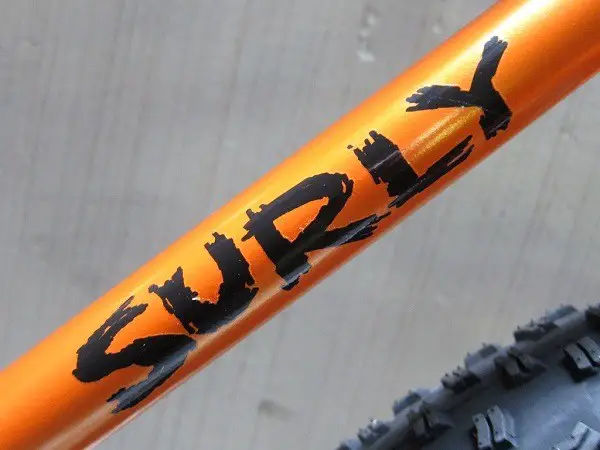
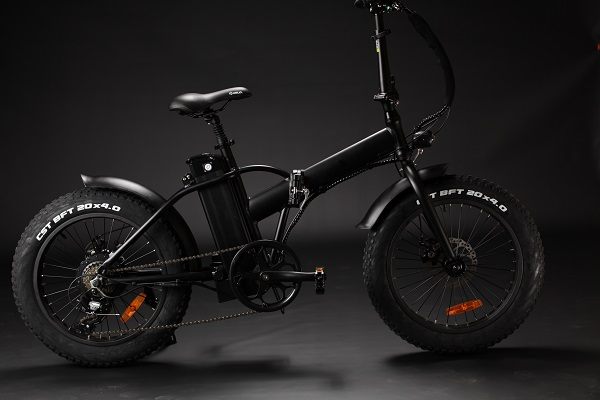


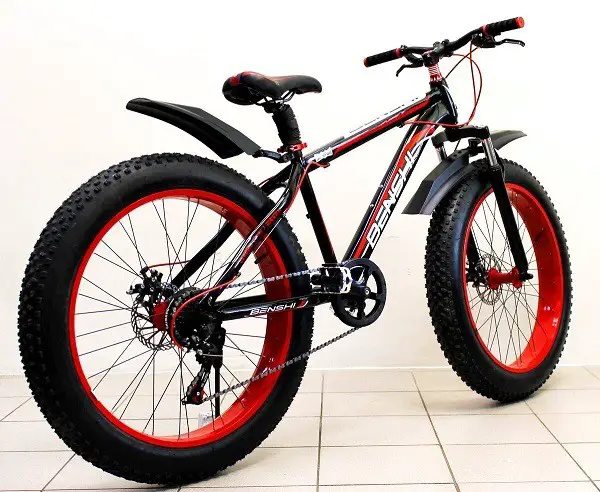
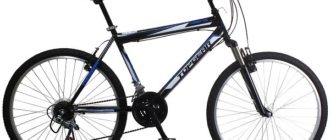

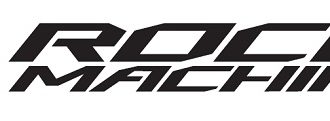



This is a great post! It’s really informative and helpful in providing valuable information about fatbikes — what they are, what their purpose is, and how to choose the right one. Thanks for taking the time to put together all this information!